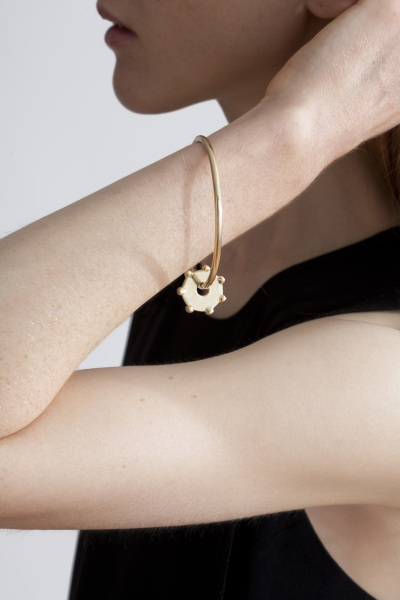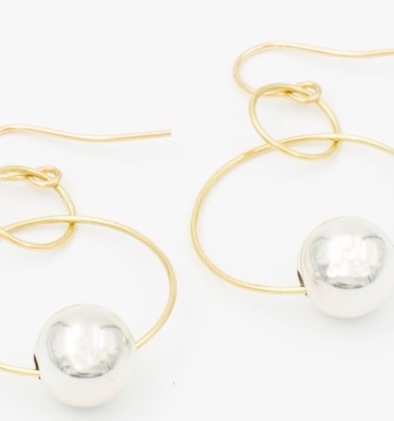Articles and News
Where Luxury Dollars Will Come From In 2017 | January 11, 2017 (0 comments)

New York, NY—The 2016 presidential election proved that prognosticating can be about as accurate as simply guessing. So trying to predict who will buy luxury goods, from where, and in what quantities is best done in only the broadest parameters. Still, there are enough visible trends in the market to make some educated analyses. Here are a few directional indicators worth keeping in mind as you plan your merchandising and marketing for 2017:
Aspirational shoppers are back. Bob Shullman, director of Shullman Research Center, says that while most luxury brands and marketers focus their attention and marketing dollars on high-income and wealthy consumers—who do, indeed, buy luxuries—the aspirational customer is back. Absent from the market following the Great Recession, with real incomes rising at last and the economy overall in very good shape it now makes sense these customers are shopping again. Shullman’s most recent Insights brief shows about one-quarter of all American adults (age 18 and over) made one or more luxury purchases this year and more than half of them are in households earning $100,000 or less.
This bodes well for luxury heading into 2017, he says. Cautiously optimistic, he says while the well-heeled may be more frequent and higher-ticket purchasers of luxury goods, mainstream consumers are buying those luxury products and services that are within their reach, so marketers may want to expand their reach beyond the top-tier zip codes.
Targeting Millennials. Another good sign is that among consumers with under $100,000 in household income, Millennials are by far the most active group of consumers, and getting them into the mix now is a solid opportunity to turn them into regular customers as their financial profiles improve, says Shullman. (Like Peter Hubbell, Shullman’s data also finds consumers with household incomes of $250,000 or more tend to be older—most are Gen-Xers or Boomers.)
Even if Millennials don’t have a lot of money yet and would rather buy experiences than stuff, when they do invest in luxury, it tends to be with the kind of careful, measured approach the WWII generation had rather than the impulse of Boomers.
For example, a recent study from NPD Group shows Millennial women will research a handbag purchase almost as carefully as an automobile. Because a handbag is an emotional purchase that telegraphs the wearer’s personality and style, Millennials do an extensive amount of research on bags before buying, using a variety of sources both digital and physical. They’re increasingly more focused on the details, quality, and uniqueness of a bag than its brand and they’re more open to trying emerging or lesser-known brands—a finding that carries across most price points and styles.
“The Millennial customer is shopping for handbags very differently than other generations,” said Rohan Deuskar, CEO and co-founder of Stylitics, a fashion technology and insights company that partnered with NPD for the study. “This customer starts with specific product attributes, not brand, and invests more time and research in her purchase than brands and retailers realize.”
That behavior also has positive implications for fine jewelry, another purchase that tends to be highly emotional and one that typically involves a lot of pre-purchase research.
Younger millennials (ages 18-24), meanwhile, said clothing—in particular, athleisure wear—was the gift they were most hoping to receive this past holiday season. Jewelry came in at number seven for these consumers, behind cash, gift cards, beauty, shoes, and travel.
But jewelry and athleisure are not mutually exclusive, as The Centurion Newsletter discovered when researching the subject last year. The athleisure trend has also propelled a parallel trend for delicate, layerable jewelry, so jewelers looking to entice these younger Millennial consumers—and their Gen-Z siblings—should focus on adding petite (and affordable) selections to their merchandise mix. These consumers will gradually morph into more affluent women, so—returning to the abovementioned point of aspirational shoppers—show pieces they can wear with leggings and tanks and instill a love of fine jewelry now while they’re still in their formative taste-building years.
The luxury of less. A corollary to experience-spending is the “luxury of less.” J. Walter Thompson Intelligence has identified a trend among the well-off to pare down and pursue a simpler life filled with fewer but better and more meaningful things. Witness the popularity of such books as the Japanese Kon-Mari cleaning method and “slow-lifestyle” publications like Kinfolk, along with the rise of both value luxury brands like Everlane and Warby Parker that deliver high quality without the overhead of top-name branding, and new launches like Permanent Collection, that feature clothing and fine jewelry inspired by art and made from recycled materials, designed to last through generations. The idea of something that lasts through generations is, of course, a natural for fine jewelry.


Blunk solid 14k recycled gold bracelet, $5,000, and double hoop earrings in recycled 14k gold and sterling silver, $400, from Permanent Collection.
Claire Miles, owner of The Shop At Bluebird, a luxury lifestyle shop in London, reassures other retailers that buying to last doesn’t necessarily mean customers are buying less. She told JWT, “There is an appreciation for the pieces we sell, and the quality means you can keep them forever, but the desire [for these pieces] means our customers do buy a lot.”
Finally, like it or not, luxury retailers are eventually going to have to compete with Amazon, says Bob Shullman. A few reasons he cites:
- The majority of all American adults have shopped at Amazon in the past 12 months and higher-income Americans are shopping Amazon frequently—at lease once a month or more.
- Amazon is making a concerted effort to target upscale consumers with virtually all types of products and services.
- About four in ten of Amazon customers are enrolled in Amazon Prime, which offers other valuable customer benefits at no additional cost, such as video streaming, unlimited music streaming, unlimited photo storage, free e-books, etc.
- When asked to compare Amazon with other stores at which they shop, almost three quarters of Amazon’s customers rate Amazon better than the other stores—and with two or more benefits.
- Looking at the luxury and affluent marketplaces in which Amazon has not yet done exceptionally well—very few luxury brands have agreed to sell their offerings through Amazon to date, says Shullman—but about a quarter of Amazon’s customers report they bought one or more luxuries in the past 12 months from any retailer in the United States. What happens if Amazon eventually launches a luxury website targeting upscale and very-high-income consumers?
Shullman’s full report, Is Amazon Coming Into Its Prime, is available for purchase on his website here. His end-of-year luxury report and outlook for 2017, Looking Towards 2017: A Reality Check Regarding the Luxury Marketplace, also available for purchase on his website, includes the following topics:
- Number of adults by generation and household income in millions
- Percent of adults by generation and household income
- Number of luxury buyers by generation and household income in millions
- Percent of luxury buyers by generation and household income
- Penetration levels of luxury buying in each of twenty-four market segments
- Number of non-buyers of luxury by generation and household income in millions
- Percent of non-buyers of luxury in each of twenty-four market segments







